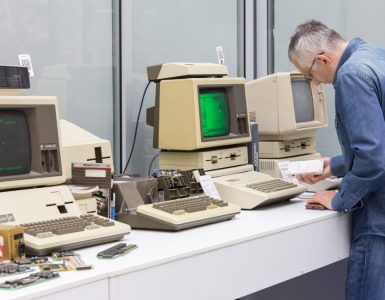We are upon the dawn for the new way of hiring.
The applicant tracking system, as currently constructed, lacks hiring manager engagement, hiring team collaboration, real integration with recruiting services, and frankly, the best candidates don’t end up in the system.
For the sake of bettering what’s ahead for the recruitment technology industry, I am not going to discuss on premise ATS software. I know many large organizations still leverage on premise ATS software. I also know many large organizations will die. If you’re still using an on premise solution, please send this telegram to your CEO, “If it’s not in the cloud, it doesn’t exist.”
1. Hiring Manager Engagement.
My colleague, Jim Milton, recently met with a 100,000+ employee company, and none of their hiring managers use the company’s applicant tracking system. This forces very highly qualified, skilled and important talent acquisition professionals to spend their time manually entering who the hiring manager decides to hire. To engage hiring managers, the modern ATS offers not only timely email updates for relevant hiring activities, but also a hiring app to stay engaged on the go. With the new way of hiring, manager usage will empower top talent acquisition professionals to work on tasks that fit their paygrade.
2. Hiring Team Collaboration.
SuccessFactors (purchased by SAP for $3.4 billion in Dec 2011) created – in the words of Bill Kutik, “a private social group among those who have interviewed a candidate in order to reach a consensus about a hire. This eliminates a great deal of friction in recruiting.” A private social group is just the beginning of collaborative hiring. The modern ATS not only has the hiring teams interview notes and ratings, but also, all candidate communication and touchpoints within the software. With the new way of hiring, your team functions as a united front.
3. The Best Candidates.
The applicant tracking system is responsible for facilitating the job application process. If the process is too cumbersome, the best candidates will drop, in essence much of the top talent, who is interested in your company enough to end up on the job ad, ends up never making it into your ATS. Without people in the system, the applicant tracking system doesn’t have value. The applicant tracking system requires integration with other hiring solutions. With the new way of hiring, you can automate the funneling of candidates from all sources: career website, recruitment agencies, job boards, and the number one source of hire, employee referrals.
4. Real Integration with Recruiting Services.
There are so many what I call “pseudo partnerships” in the recruiting tech industry. For example, unnamed ATS will announce a partnership with an candidate assessment provider, but really, it is just a customer referral relationship. With a real ATS / candidate assessment partnership, you can purchase and consume candidate assessments within the same domain as applicant tracking. Additionally, if you recruitment service providers are purchased and consumed on different sites, you do not gain the comparative insight into the performance of hiring spend. With the new way of hiring, recruiting analytics from all your for all your talent and service providers should be in one place.
Historically, the applicant tracking system have done poor job of actually getting top talent talent into the system, and on the other side of the market, the applicant tracking systems have also done a poor job of engaging the hiring decision makers. At the end of the day, it’s about making that human connection between talent and hiring manager. As Liz Ryan put it, “The ATS vendors that will survive to 2020 and beyond will be the ones that figure out how to humanize the selection process. Luckily, it isn’t complicated.” Demo the new way of hiring.











